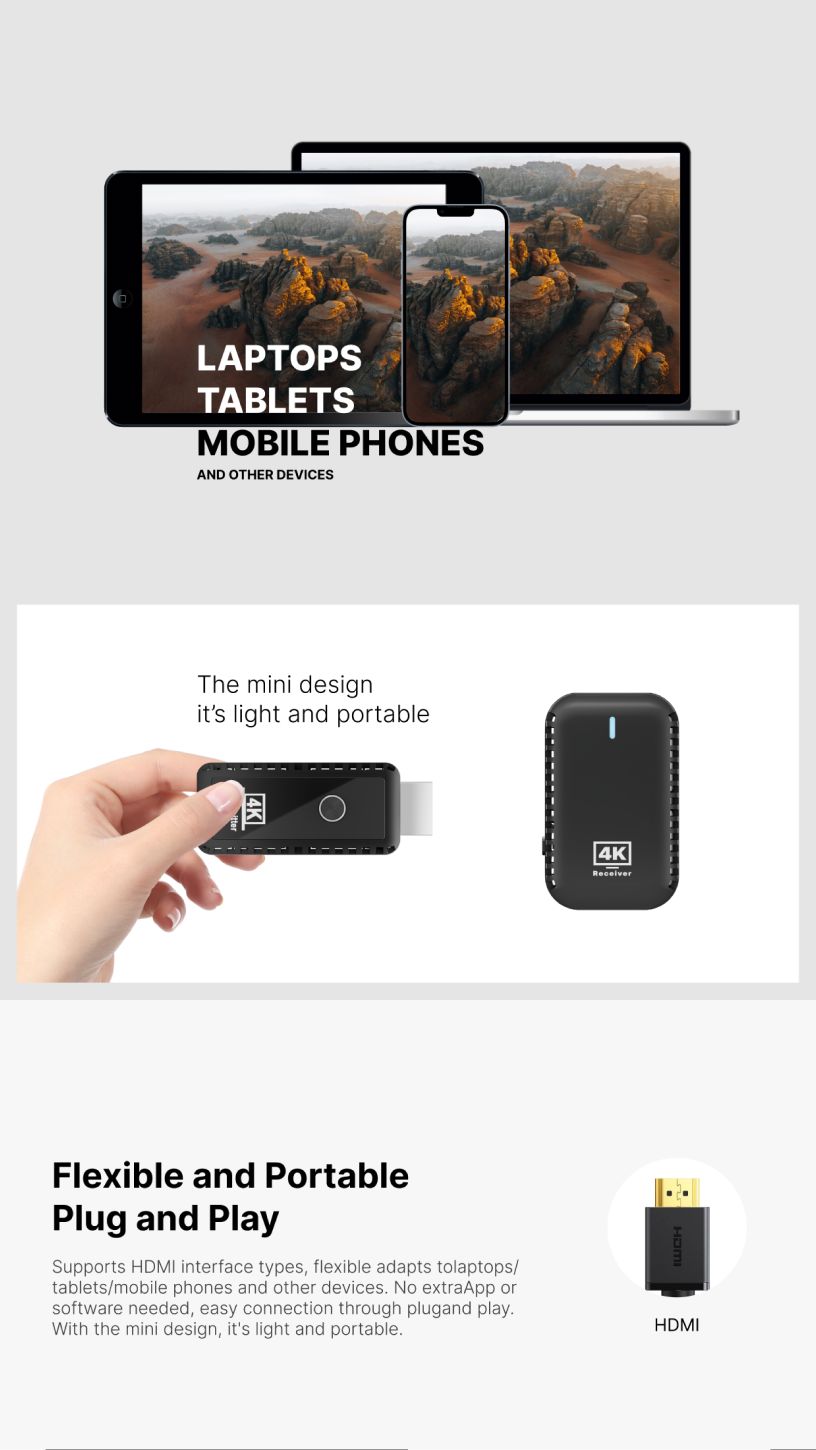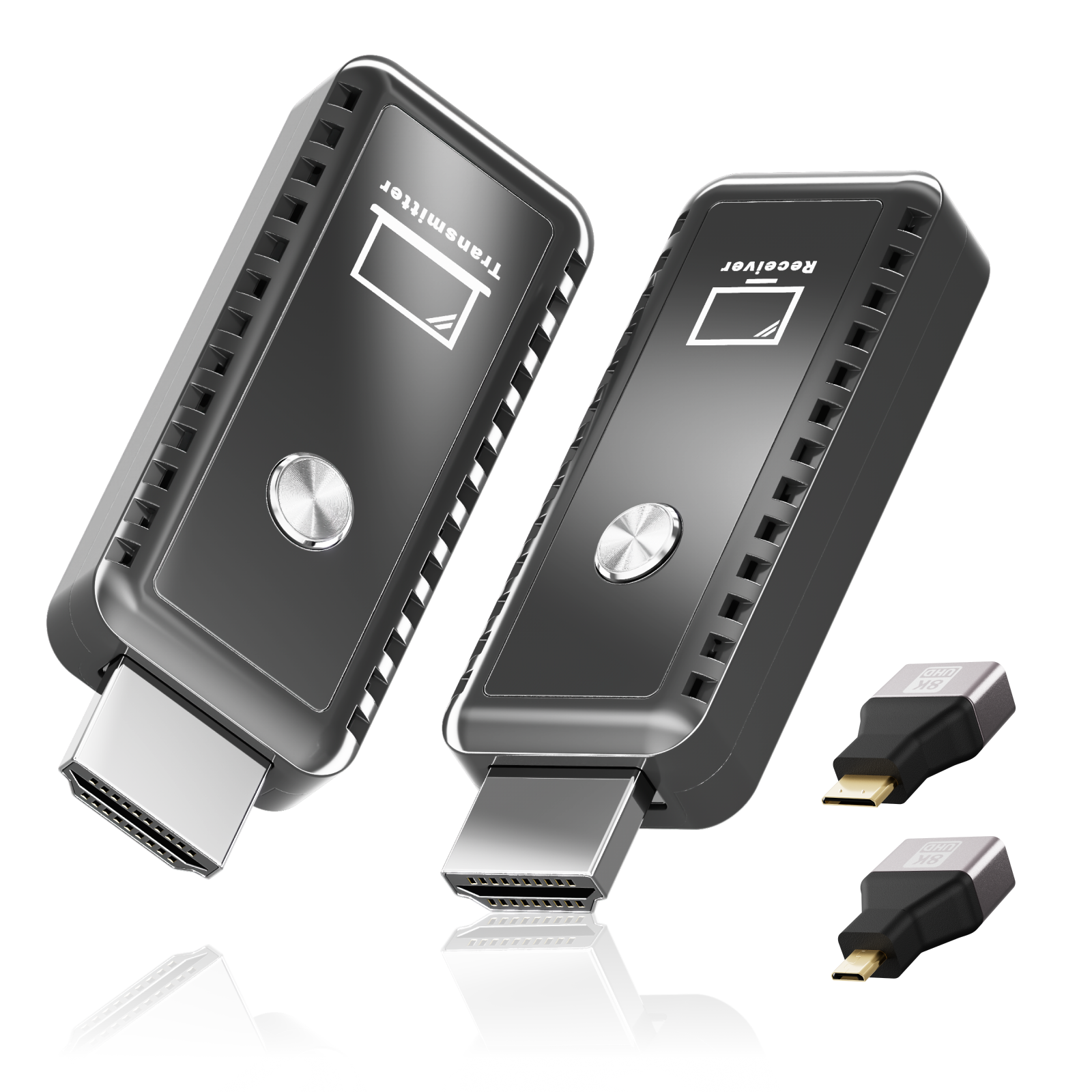Wireless HDMI technology has revolutionized the way we connect devices to displays, eliminating the need for physical cables
and providing a more convenient and flexible solution for media streaming. By enabling high-definition video and audio
transmission wirelessly, it allows users to enjoy a clutter-free entertainment experience. In this article, we will explore the
benefits, functionality, and common uses of wireless HDMI.
How Wireless HDMI Works
Wireless HDMI uses radio frequency (RF) signals to transmit video and audio from a source device, such as a laptop,
gaming console, or Blu-ray player, to a TV or projector. This technology replaces traditional HDMI cables with a wireless
transmitter and receiver. The transmitter is connecte to the source device, while the receiver is linked to the display.
These devices communicate with each other over a secure wireless connection,
typically using Wi-Fi or a dedicated wireless protocol like WHDI (Wireless Home Digital Interface).
Key Benefits of Wireless HDMI
1. Clutter-Free Setup
One of the main advantages of wireless HDMI is the ability to eliminate the mess of tangled cables. This makes your setup
cleaner and more aesthetically pleasing, especially in home theaters or living rooms where multiple devices need to be
connected.
2. Convenience and Flexibility
Wireless HDMI offers the freedom to place devices in any location without worrying about cable length or access to
HDMI ports. It’s ideal for presentations, streaming movies, or gaming, as you can move around without being confined
by wires.
3. High-Quality Performance
Despite being wireless, modern wireless HDMI systems can support high-definition video resolutions up to 4K and surround
sound audio. This ensures a high-quality viewing and listening experience without sacrificing performance.
4. Versatility in Application
Wireless HDMI is widely used in both home and professional settings. It is perfect for home entertainment systems, allowing
users to wirelessly stream content from their laptops or media players to the TV. In the business world, wireless HDMI can
streamline presentations by allowing presenters to connect their devices to projectors without cables.
Considerations Before Buying Wireless HDMI
While wireless HDMI offers great convenience, it’s essential to consider a few factors before purchasing. For example,
the range and compatibility of the device should be checked to ensure it works well in your environment. Additionally,
wireless HDMI may experienceslight latency or interference in some cases, especially in environments with heavy Wi-Fi traffic.
Therefore, choosing a reliable, high-quality product is crucial for optimal performance.
Conclusion
Wireless HDMI is an innovative solution for simplifying connections between devices and displays. It offers
freedom from cables,improved aesthetics, and high-quality video and audio performance. As technology
continues to evolve, wireless HDMI will likely become even more reliable and accessible, further enhancing
the multimedia experience for users worldwide.




